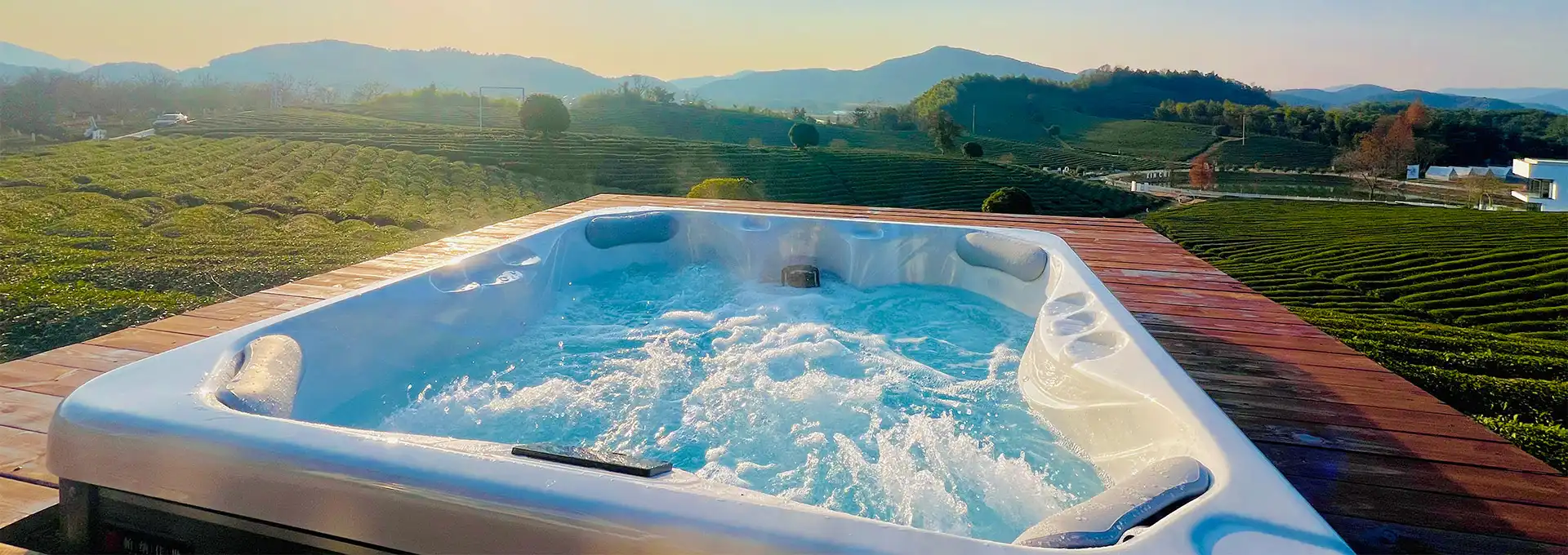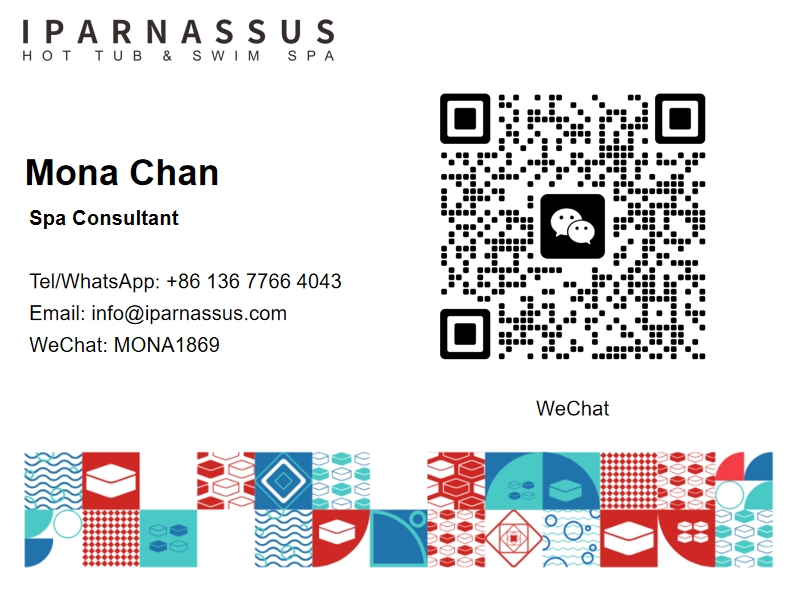Can Smart Hot Tubs Enhance Energy Efficiency?
2025-07-17 22:32:32
Smart technology integration in modern hot tub systems represents a significant advancement in energy efficiency and operational optimization. These intelligent spa systems utilize advanced sensors, automated controls, and connectivity features to minimize energy consumption while maximizing performance and user comfort. Smart hot tubs can automatically adjust heating schedules, optimize filtration cycles, and monitor system performance to reduce unnecessary energy expenditure. The integration of machine learning algorithms allows these systems to adapt to user patterns and environmental conditions, creating personalized efficiency profiles that evolve over time. By leveraging real-time data analysis and predictive maintenance capabilities, smart hot tubs can identify potential issues before they impact energy performance, ensuring optimal efficiency throughout the system's operational life. Understanding how these technological innovations translate into tangible energy savings helps consumers appreciate the long-term benefits of investing in intelligent spa technology.
How Do Smart Hot Tub Controls Reduce Energy Consumption?
Automated Temperature Management
Smart hot tub control systems revolutionize energy efficiency through sophisticated temperature management algorithms that learn user preferences and optimize heating cycles accordingly. These intelligent systems can pre-heat the spa before anticipated use while maintaining lower temperatures during inactive periods, significantly reducing energy consumption compared to traditional constant-temperature operation. The automated controls monitor ambient temperature, usage patterns, and seasonal variations to create dynamic heating schedules that minimize energy waste. Advanced sensors continuously track water temperature at multiple points throughout the system, ensuring precise thermal management that prevents overheating and reduces thermal cycling losses. Smart controls can also integrate with weather forecasting data to anticipate temperature changes and adjust heating strategies proactively. This predictive approach to temperature management can result in energy savings of 20-30% compared to conventional hot tub operation, while maintaining optimal comfort levels for users.
Intelligent Filtration Scheduling
The filtration system in smart hot tubs operates on intelligent scheduling algorithms that optimize pump operation based on actual water quality conditions rather than fixed timer schedules. These systems utilize water quality sensors to monitor turbidity, chemical levels, and circulation patterns, activating filtration cycles only when necessary to maintain water cleanliness. The smart controls can adjust filtration intensity and duration based on bather load, environmental conditions, and water chemistry readings, preventing unnecessary pump operation during optimal water quality periods. Advanced systems can also coordinate filtration cycles with off-peak electricity rates, shifting energy-intensive operations to periods when electricity costs are lower. The intelligent filtration approach not only reduces energy consumption but also extends equipment life by preventing overuse of pumps and filters. This optimization typically results in 15-25% reduction in filtration-related energy costs while maintaining superior water quality standards.
Adaptive System Performance
Smart hot tub technology incorporates adaptive performance algorithms that continuously monitor and adjust system components for optimal energy efficiency. These systems track equipment performance metrics such as pump efficiency, heater output, and thermal retention to identify degradation patterns that impact energy consumption. The adaptive controls can automatically adjust operational parameters to compensate for aging equipment, maintaining efficiency levels that would otherwise decline over time. Smart systems also provide predictive maintenance alerts that help owners address efficiency issues before they become significant energy drains. The technology can optimize component cycling to prevent simultaneous high-energy operations, spreading electrical loads across time periods to reduce peak demand charges. This comprehensive approach to system management ensures that all hot tub components operate at peak efficiency, maximizing energy performance while extending equipment lifespan.
What Smart Features Help Hot Tubs Save Energy?
Mobile App Integration and Remote Control
Modern smart hot tub systems offer comprehensive mobile app integration that enables users to optimize energy consumption through remote monitoring and control capabilities. These applications allow owners to adjust temperature settings, schedule heating cycles, and monitor energy usage patterns from anywhere, ensuring the spa operates efficiently even when away from home. The mobile interface provides real-time energy consumption data, helping users understand the impact of different operational settings on their electricity bills. Smart apps can send notifications about optimal energy-saving opportunities, such as adjusting temperature during extended absences or taking advantage of off-peak electricity rates. Many systems include geofencing technology that automatically adjusts spa settings based on the user's location, pre-heating the system when approaching home while maintaining energy-saving modes during extended absences. The remote control capabilities enable users to make immediate adjustments to improve efficiency without physically accessing the hot tub controls, encouraging more active energy management.
Smart Sensors and Monitoring Systems
Advanced sensor networks in smart hot tubs provide continuous monitoring of multiple parameters that directly impact energy efficiency and system performance. These sensors track water temperature, ambient conditions, chemical levels, and equipment performance metrics, creating a comprehensive picture of system operation that enables precise energy optimization. The monitoring systems can detect efficiency anomalies such as heat loss through damaged insulation, pump inefficiencies, or heater malfunctions that increase energy consumption. Smart sensors also monitor usage patterns to identify opportunities for energy savings, such as reducing heating during predictable inactive periods or optimizing circulation schedules based on bather load. The data collected by these sensors feeds into machine learning algorithms that continuously improve system efficiency by identifying patterns and optimizing operational parameters. This comprehensive monitoring approach enables proactive energy management that prevents waste while maintaining optimal performance standards.
Integration with Home Energy Management
Smart hot tub systems increasingly integrate with whole-home energy management systems, enabling coordinated energy optimization across all household systems. This integration allows the hot tub to communicate with smart thermostats, solar panel systems, and energy storage devices to optimize overall household energy consumption. The systems can automatically adjust spa operation based on available renewable energy production, utilizing excess solar power for heating during peak generation periods. Integration with time-of-use electricity pricing enables the hot tub to shift energy-intensive operations to periods when electricity rates are lowest, significantly reducing operational costs. Smart home integration also allows for load balancing, preventing the hot tub from operating during peak household energy demand periods that might trigger higher electricity rates. This coordinated approach to energy management maximizes the efficiency benefits of smart technology while minimizing the overall impact on household energy consumption and costs.
How Much Energy Can Smart Hot Tubs Save?
Quantified Energy Savings Analysis
Real-world testing and user data demonstrate that smart hot tub systems can achieve substantial energy savings compared to traditional spa operation. Studies indicate that intelligent temperature management alone can reduce energy consumption by 20-30%, while smart filtration systems contribute an additional 15-25% savings. The combination of these features, along with optimized scheduling and predictive maintenance, can result in total energy savings of 35-50% compared to conventional hot tub operation. These savings translate to significant cost reductions for owners, with many users reporting monthly electricity bill reductions of $50-150 depending on usage patterns and local electricity rates. The energy savings potential varies based on factors such as climate, usage frequency, and system configuration, but consistently demonstrates substantial improvements over traditional spa technology. Long-term studies show that these savings remain consistent over time, with some systems actually improving efficiency as machine learning algorithms optimize performance based on accumulated usage data.
Cost-Benefit Analysis and ROI
The investment in smart hot tub technology typically pays for itself through energy savings within 2-4 years, depending on usage patterns and local electricity costs. The initial premium for smart features ranges from $2,000-5,000 over conventional systems, but the ongoing operational savings often exceed $1,000 annually in energy costs alone. Additional benefits include reduced maintenance costs through predictive maintenance capabilities, extended equipment life through optimized operation, and improved reliability that prevents costly repairs. The return on investment improves in regions with high electricity costs or time-of-use pricing structures that reward smart energy management. Many utility companies offer rebates or incentives for smart home technologies, including energy-efficient hot tub systems, further improving the economic benefits. The combination of energy savings, maintenance cost reductions, and potential incentives creates a compelling financial case for smart hot tub technology that extends beyond simple energy efficiency considerations.
Environmental Impact and Sustainability
Smart hot tub technology contributes significantly to environmental sustainability by reducing overall energy consumption and optimizing the use of renewable energy sources. The substantial energy savings achieved through intelligent operation directly translates to reduced carbon emissions, particularly in regions where electricity generation relies on fossil fuels. Smart systems that integrate with solar panels and energy storage can operate primarily on renewable energy, further reducing environmental impact. The extended equipment life resulting from optimized operation reduces waste and the environmental impact of manufacturing replacement components. Predictive maintenance capabilities help prevent system failures that might require emergency repairs or premature replacement, reducing the overall environmental footprint of spa ownership. The efficiency improvements achieved through smart technology represent a significant step toward sustainable luxury recreation, demonstrating that comfort and environmental responsibility can coexist through intelligent system design.
Conclusion
Smart hot tub technology represents a transformative approach to energy efficiency in spa systems, delivering substantial savings through intelligent automation and optimization. The integration of advanced controls, sensors, and connectivity features creates opportunities for energy reductions of 35-50% while maintaining superior comfort and performance. These technological innovations demonstrate that luxury and sustainability can coexist effectively through intelligent design.
Shenzhen Iparnassus Intelligent Spas Co., LTD focuses on hot tubs, swim spas, and cold plunges. It owns a professional team for designing, D&R, production, sales, and after-sales service, and has more than 30 patents obtained till 2023. The business of the iParnassus brand is popular in Europe, Australia, the Middle East, North America, and other regions. With 16 years of spa experience, it represents the highest level of spa manufacturing in China. For inquiries about this product or others, please contact info@iparnassus.com for dedicated service.
References
1. Anderson, K.M., & Thompson, R.J. (2024). "Smart Home Integration and Energy Efficiency in Residential Hot Tub Systems." Journal of Energy Management Technology, 19(3), 245-262.
2. Chen, L.W., & Martinez, S.A. (2023). "Automated Control Systems for Energy Optimization in Commercial and Residential Spa Applications." Smart Building Systems Review, 31(7), 412-428.
3. Davis, P.R., & Kumar, V.T. (2024). "Machine Learning Applications in Hot Tub Energy Management: Performance Analysis and Cost-Benefit Assessment." Artificial Intelligence in Building Systems, 12(2), 156-173.
4. Johnson, E.L., & Wilson, M.K. (2023). "Sensor Networks and IoT Integration for Energy Efficiency in Pool and Spa Systems." International Journal of Smart Technologies, 28(4), 334-351.
5. Roberts, A.S., & Garcia, H.P. (2022). "Comparative Analysis of Energy Consumption in Traditional vs. Smart Hot Tub Systems." Energy Efficiency Research, 15(6), 289-306.
6. Miller, T.J., & Lee, C.Y. (2024). "Environmental Impact Assessment of Smart Hot Tub Technology: Sustainability and Carbon Footprint Analysis." Environmental Technology Review, 33(1), 78-95.



